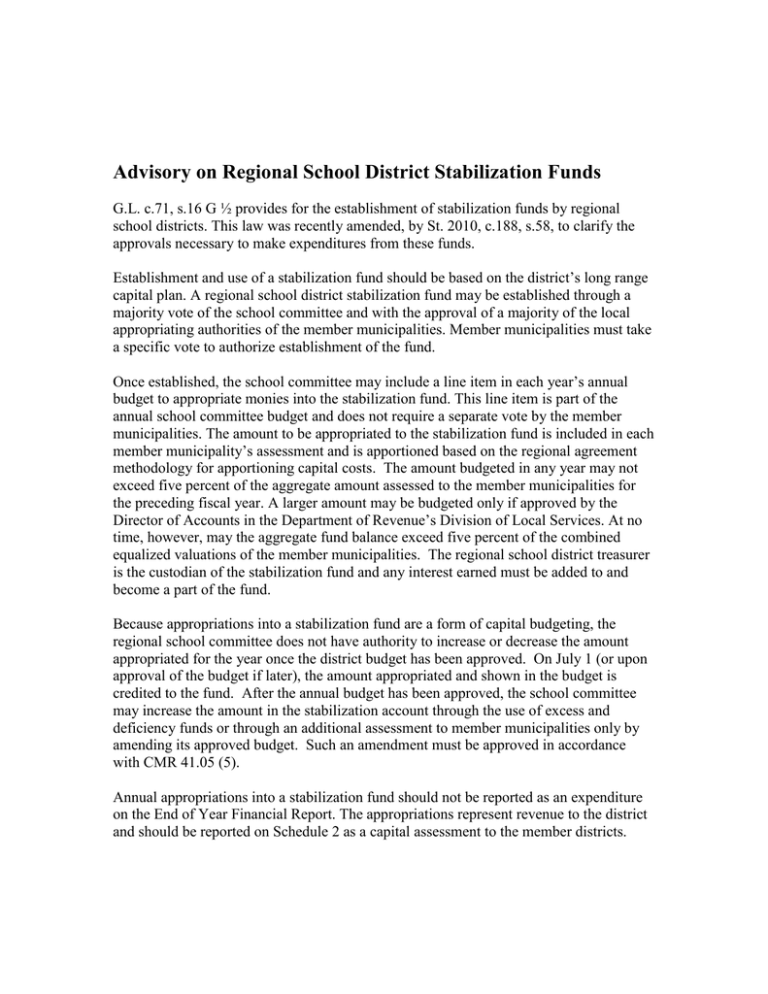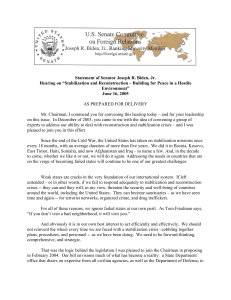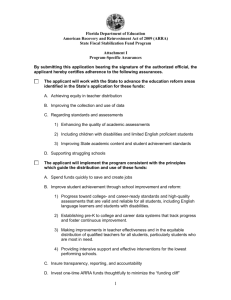advisory
advertisement

Advisory on Regional School District Stabilization Funds G.L. c.71, s.16 G ½ provides for the establishment of stabilization funds by regional school districts. This law was recently amended, by St. 2010, c.188, s.58, to clarify the approvals necessary to make expenditures from these funds. Establishment and use of a stabilization fund should be based on the district’s long range capital plan. A regional school district stabilization fund may be established through a majority vote of the school committee and with the approval of a majority of the local appropriating authorities of the member municipalities. Member municipalities must take a specific vote to authorize establishment of the fund. Once established, the school committee may include a line item in each year’s annual budget to appropriate monies into the stabilization fund. This line item is part of the annual school committee budget and does not require a separate vote by the member municipalities. The amount to be appropriated to the stabilization fund is included in each member municipality’s assessment and is apportioned based on the regional agreement methodology for apportioning capital costs. The amount budgeted in any year may not exceed five percent of the aggregate amount assessed to the member municipalities for the preceding fiscal year. A larger amount may be budgeted only if approved by the Director of Accounts in the Department of Revenue’s Division of Local Services. At no time, however, may the aggregate fund balance exceed five percent of the combined equalized valuations of the member municipalities. The regional school district treasurer is the custodian of the stabilization fund and any interest earned must be added to and become a part of the fund. Because appropriations into a stabilization fund are a form of capital budgeting, the regional school committee does not have authority to increase or decrease the amount appropriated for the year once the district budget has been approved. On July 1 (or upon approval of the budget if later), the amount appropriated and shown in the budget is credited to the fund. After the annual budget has been approved, the school committee may increase the amount in the stabilization account through the use of excess and deficiency funds or through an additional assessment to member municipalities only by amending its approved budget. Such an amendment must be approved in accordance with CMR 41.05 (5). Annual appropriations into a stabilization fund should not be reported as an expenditure on the End of Year Financial Report. The appropriations represent revenue to the district and should be reported on Schedule 2 as a capital assessment to the member districts. Advisory on Regional School District Stabilization Funds Page Two In any given year, expenditures from the fund may be authorized by a vote of two-thirds of all the members of the regional school committee. If the funds are to be used for a purpose for which the district is permitted to borrow, no further approval is required. These purposes are listed in G.L. c.71, s.16(d), and generally encompass what are considered capital costs. If the funds are to be used for any other purpose (for example, to cover unexpected increases in operating costs), then the approval of the Director of Accounts is also required. Expenditures are made directly from the stabilization fund; a transfer into the general fund is not required. Expenditures should be reported on the End of Year Financial Report as an additional appropriation of the school committee. Unexpended balances in amounts authorized for expenditures close to the stabilization fund when the project or purpose is completed. The unexpended balance of the fund at the end of a fiscal year carries over to the succeeding fiscal year. Balances in the stabilization fund are not part of the district’s general fund and do not impact the district’s excess and deficiency calculation. However, if the Director of Accounts determines that an annual appropriation into the stabilization fund, or the aggregate balance of the fund, exceeds the applicable statutory limit, the Director may take appropriate action, including but not limited to closing any amount in excess of that limit to the district’s general fund. A report of the fund balance and any withdrawals or additions must be prepared annually and presented to the member municipalities. Questions about this advisory should be directed to Christine Lynch, director of school governance, at 781-338-6520 or clynch@doe.mass.edu .




